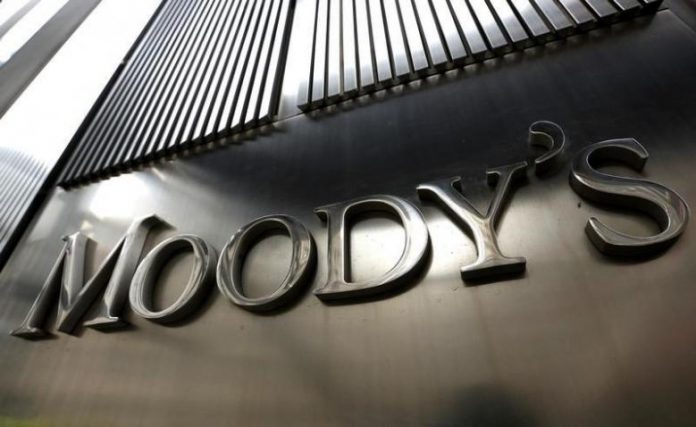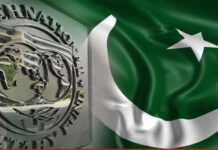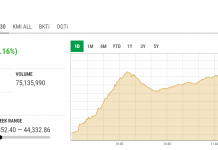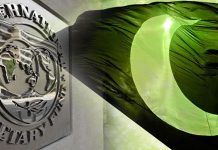
LAHORE: Moody’s on Friday projected Pakistan’s current account deficit to stand around 4.8 percent of GDP in the current financial year 2018-19.
The report from Moody’s said fallout from the correction in Turkish exchange rate and asset prices again highlighted the external vulnerability and sensitivity to an increase in the cost of debt of some emerging market and frontier market nations.
Earlier in June, Moody’s had marked Pakistan and other emerging/frontier markets like Argentina, Ghana, Mongolia, Sri Lanka beside Turkey as most susceptible to dollar appreciation.
Also, the rating agency stated, “Out of these, Argentina and, to a lesser extent Pakistan’s currency have experienced marked depreciations against the dollar year to date.”
According to Moody’s report, those economies most sharply hit by weakening exchange rates, lower capital inflows in 2018 share common characteristics of twin current account and budget deficits.
It added, “while country-specific factors — often relating to policy credibility — have likely also fueled the financial market sell-off.”
The rating agency said, “sovereigns with relatively high debt burdens, weak debt affordability and relatively short debt maturities are especially susceptible to a deterioration in their credit profiles in the event of rising government bond yields.”
In a comment to Profit, Charlie Robertson, global chief economist Renaissance Capital said, “One method is to continue the devaluation route which the SBP has already allowed. This should help address the balance of payments challenge.”
“Second, the SBP probably needs to raise interest rates to slow domestic demand. Third, the government may need to carefully analyze the most economic investment projects in the CPEC and cut or slow the less profitable projects,” he added.
Moody’s said, “Pakistan is facing elevated external pressures stemming from strong domestic demand and capital-import heavy investments related to the China-Pakistan Economic Corridor (CPEC).
“We expect a current account deficit of 4.8% of GDP this year. While reserve coverage of external debt repayments remains adequate, we expect that coverage to weaken,” it added.
“Unless capital inflows increase substantially, possibly through and in combination with an IMF program, we see elevated risk of a further erosion in foreign exchange reserves,” said Moody’s.
Moreover, the rating agency said about one-third of government debt was denominated in foreign currency and its gross borrowing requirements stood around 27-30 percent of GDP, the highest amongst rated sovereigns.
This was fueled by continuing fiscal deficits and the governments’ dependence on short-term debt having an average maturity of 3.8 years.
And Moody’s stated, “Pakistan is not a major recipient of volatile capital inflows, local currency depreciation could raise inflation and prompt additional domestic rate hikes, which would pass through to borrowing costs and further weaken the government’s fragile fiscal position.”
It cautioned the country’s debt affordability could erode significantly “from already low levels in the event of a sharp and sustained increase in the cost of debt.”
Head of Research, Arif Habib Limited Samiullah Tariq while speaking to Profit said, “I believe the government will work on optimizing all possible sources of earning foreign exchange including exports, remittances, issuance of bonds, securing long-term funding (possibly IMF) etc.”
“The government is also expected to reduce expenditure including the PSDP to control fiscal deficit and minimum asset tax might also be imposed for resource mobilization,” he added.
Adnan Sheikh Pak Kuwait Investment Co AVP Research said, “Pakistan has already enacted some measures to begin dealing with the situation to reduce external deficits in the form currency depreciation along with various curbs on imports i.e. restriction on dollars and enhanced import duties.
“While on the fiscal front adjustments will come in the form of austerity whereby unnecessary spending will be reduced e.g. curbing lavishness of ministerial spending, discretionary funds and revenues are to be boosted by broadening the tax net, bringing back overseas assets, going after the corrupt, using govt properties to generate revenues, increasing working days etc,” said Adnan.
He added, “However, these measures will not have a material impact in the near term, where a funding gap exists of around $9bn, and to comfortably address this, significant external borrowing is required.”
Also, Mr Adnan highlighted “To prevent the gap from widening further and ensure repayment to the lender (presumably the IMF) would require further tightening in the form of lower subsidies (fuel/power), which coupled with depreciation would fuel more inflation and in turn warrant higher interest rates. in such a scenario maintaining such a high growth rate would be highly unlikely as consumption sectors would need to be curtailed such as automobiles, petroleum, construction materials etc.”
Furthermore, Adnan said, “However the situation could worsen and in the recent past Pakistan has benefited from low commodity prices globally, given US-China tensions where most recent trade talks have also fallen through there could be a fresh round of tariffs on Chinese goods which would also jack up international prices and as the dollar appreciates will pose further risks to our fragile economy.”
Talking about the current account deficit, Adnan commented: “Moody’s projected CAD at 4.8 percent of GDP for FY19, whilst in July it was recorded at $2.2 billion which leaves around $13 billion for the remaining 11 months which averages to a deficit of around $1.2bn per month.”





















